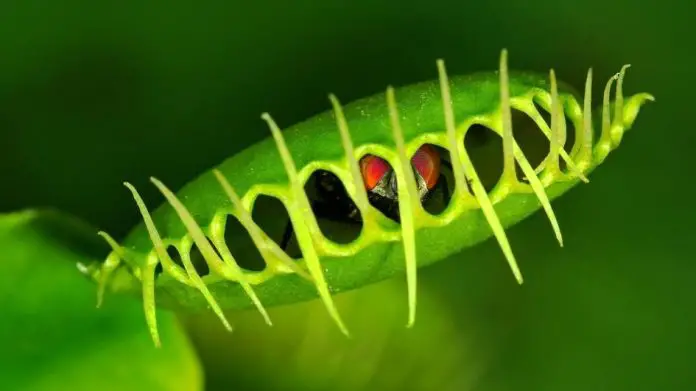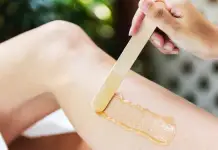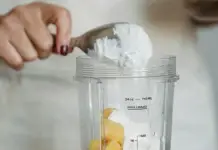Usually, animals eat plants. It’s rare that we hear of plants that eat, which is why they’re all the more fascinating. After all, the first thing we learn about plants in school is photosynthesis. The tables have turned on this list, as we’ve compiled 7 carnivorous plants that actually consume living things.
1) Tropical Pitcher Plant
Also known as Nepenthes, tropical pitcher plants are mostly found in Borneo, South China, Malaysia, Indonesia and the Philippines. The plant, as its name suggests, has a pitcher full of digestive fluid, and that’s where the animals go to die. The lip of the pitcher is often colourful and/or sweet-smelling to attract insects, but it’s also extremely slippery, which causes insects to slip and fall right into the waiting pitcher. Although pitcher plants usually prey on insects, but larger species such as the Nepenthes Rajah have been known to drown small mammals like rats. Lovely.
2) Waterwheel Plant
The waterwheel plant is a smaller, fancier version of the Venus flytrap, which we will be looking at later. A rootless, aquatic plant, the waterwheel plant makes use of snap traps. Basically, the trap consists of two lobes which fold together. The openings of the trap are covered in teeny tiny trigger hairs. As you can guess, once these trigger hairs are triggered, the trap immediately snaps shut around the prey. The trap closes in only 10 milliseconds, which makes it one of the fastest plant movements.

3) Sundew
Resembling sea anemones, sundews have hair-covered leaves that catch insects that get too close. I say leaves, but since the plant can move on its own, maybe a better word for it would be tentacles. These tentacles are sticky with sweet nectar, which attracts insects to land on them. Once an insect lands, the other tentacles reach out to draw in the insect closer and closer to wherever its “stomach” is. The digestion process begins once the insect is fully trapped. What a bright little ray of sunshine the sundew is.
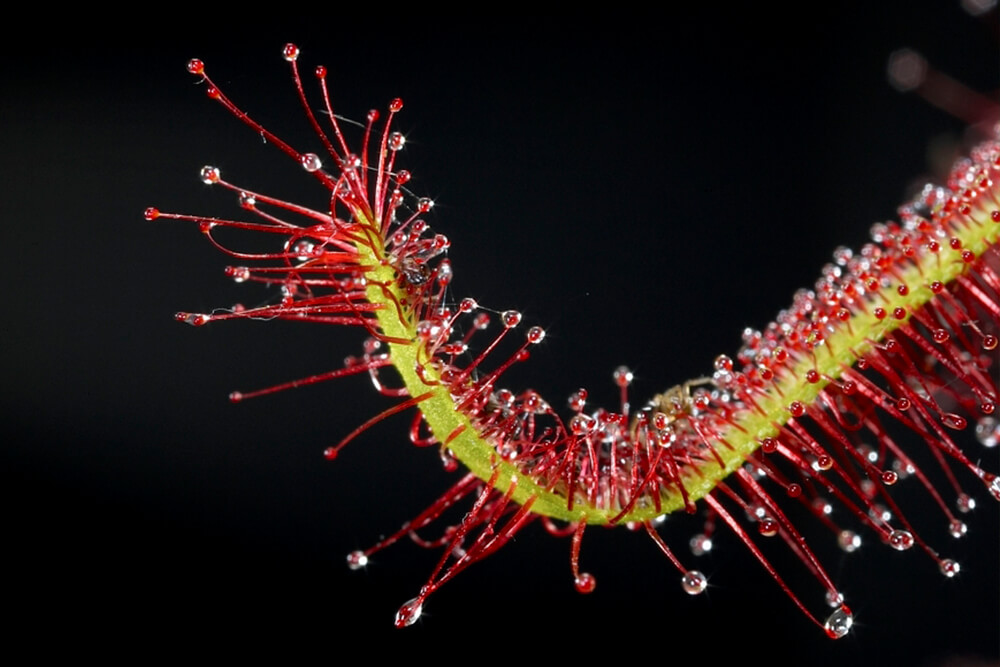
4) Bladderwort
The bladderwort appears to be a flower, but appearances can be deceiving. This flower doesn’t survive by getting its dose of sun, but rather by feasting on water-dwelling microbes. Larger species have been observed trapping small tadpoles as well. Found in fresh water or wet soil, bladderworts are also the only carnivorous plants which makes use of bladder traps. To explain simply, these plants have a trapdoor which is lined with trigger hairs and remains closed. Once a microbe/other tiny living thing triggers the hairs, the trapdoor opens, sucks in its nearest surroundings, and snaps shut again. Talk about a disappearing act!
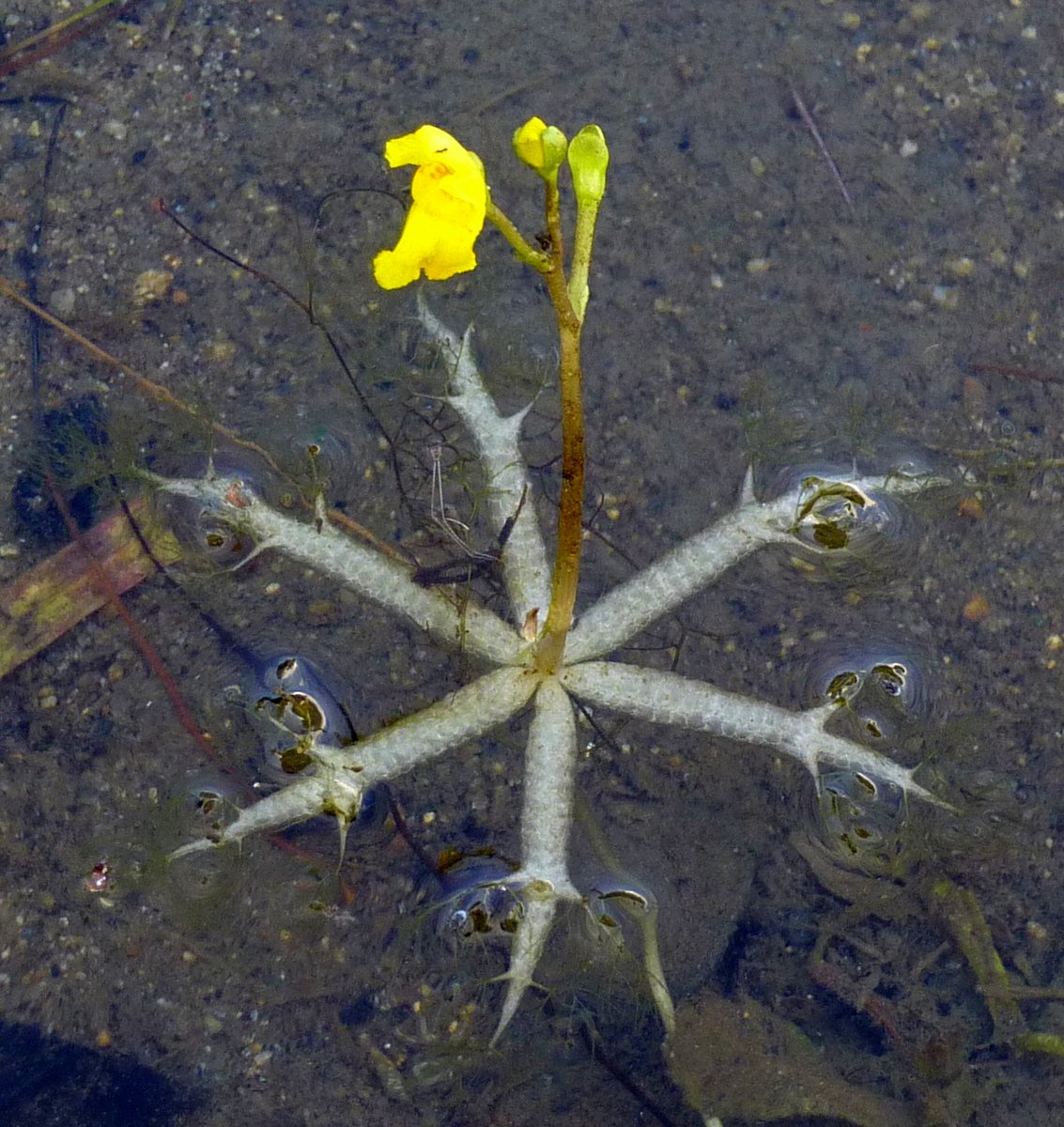
5) North American Pitcher Plant
Yes, more pitcher plants! Otherwise known as Sarracenia, the North American pitcher plant doesn’t have a pitcher per se, but a funnel. Which actually kind of look like celery stalks. Anyway, these funnels have a hood to prevent rainwater from diluting its digestive juices, because somehow their digestive juices aren’t as strong as tropical pitcher plants. (Nepenthes’ digestive juices are still really potent no matter how much rainwater gets in.) As with the tropical pitcher plants, insects are attracted to the lip, then they fall to their slippery deaths. These plants don’t drown other small mammals though.

6) Venus Flytrap
Ah, yes. The celebrity of all carnivorous plants. As with the waterwheel plant, the Venus flytrap uses the snap trap mechanism. The traps of the Venus flytrap are equipped with special sensory hairs, as they snap shut and seals its prey inside as soon as the hairs are triggered. Then, the digestion begins. The Venus flytrap almost has a mind of its own; it’s actually so advanced that it can differentiate between live stimulus, and non-living stimulus. Wow? That’s pretty smart for a plant!

7) Cobra Lily
Okay so it’s another pitcher plant, but a plant that resembles a cobra? How could I not include it? Also known as the California pitcher plant, the Cobra Lily doesn’t use the good ol’ “pitcher” trap, but it uses something called the lobster pot trap. Lobster pot traps are easy to get into, but impossible to get out of. Sorry. Instead of sweet nectar, light speckles which are allowed to shine through the plant attract insects. When they land, they find themselves within thousands of fine, dense hairs that grow inwards. They have no choice but to follow the hairs deeper right into the plant’s digestive organ, and there’s no way to back out of it.
These plants really are kind of cool, aren’t they? Also, some of them can be grown at home! Would you like to find out more about these carnivorous plants, and which can be grown at home? Let us know in the comments below!
https://www.facebook.com/tallypressmy/


